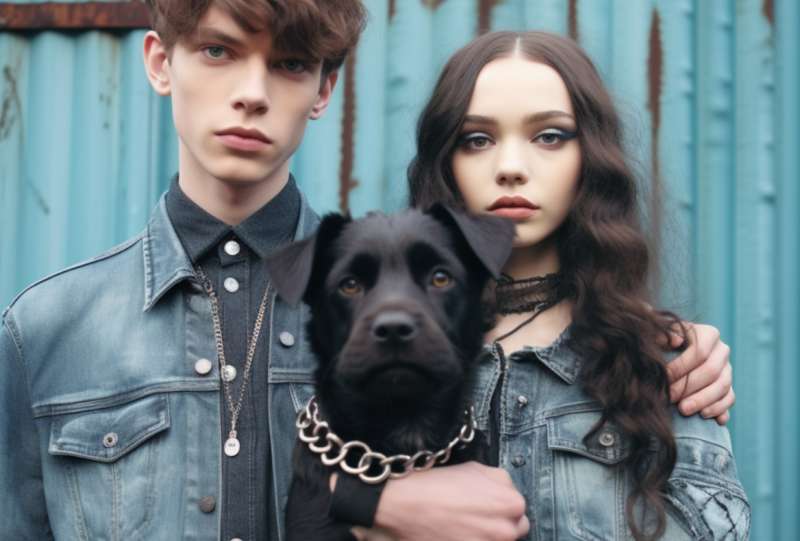The Evolution of Denim in Fashion

A Riveting History
Denim, the sturdy fabric that has sheathed the legs and derrieres of countless generations, has an origin story as riveting as the copper fastenings that adorn it. In the late 19th century, a Bavarian immigrant named Levi Strauss teamed up with a Latvian tailor, Jacob Davis, to create a pair of trousers that would be able to withstand the rigors of the American West. Little did they know that their creation would become the uniform of choice for cowboys, miners, rebels, and rock stars alike.The Birth of Blue Jeans
The Levi's 501, the first pair of blue jeans, was born in 1873 and featured copper rivets to reinforce the points of strain, a button fly, and a distinctive blue hue, which was a result of indigo dye. The pants quickly gained popularity among the working class, who appreciated their durability and comfort. In the early 20th century, the fabric most commonly used for denim was made from cotton grown in the southern United States, which was then shipped to textile mills in the north, where it was spun, woven, and dyed. It was a perfect symbiosis of industry and agriculture, like peanut butter and jelly, or Simon and Garfunkel.Denim Goes Hollywood
Denim's rise to stardom began in the 1930s when Hollywood Westerns introduced the rugged, indigo fabric to the masses. Suddenly, everyone wanted a pair of those rugged, cowboy pants. However, it was during the post-World War II era when denim truly entered the realm of fashion. Soldiers returning from the war, eager to leave behind the horrors they had witnessed, embraced denim as a symbol of freedom and rebellion. James Dean and Marlon Brando, the smoldering icons of the silver screen, donned denim as they brooded and scuffled their way through cinematic history, forever cementing the fabric's association with youthful defiance. Teenagers across the nation clamored for a bit of that rebellious spirit, and denim became the uniform of the counterculture.The 60s and 70s: A Time of Flourishing
Denim's popularity reached new heights in the 1960s and 70s as it became the canvas upon which the era's political and social movements were painted. The civil rights movement, women's liberation, and antiwar protests all found expression in the form of vibrant embroideries, patches, and slogans that adorned denim jackets and jeans. Suddenly, denim was not just a utilitarian fabric but a vehicle for self-expression and individuality. A denim-clad Jimi Hendrix wailing on his guitar at Woodstock was the epitome of the era's revolutionary spirit.Denim Gets Designer
As the 1980s rolled around, denim began to climb the social ladder as designers started to dabble in the fabric. Calvin Klein's provocative ad campaigns featuring a young Brooke Shields purring that nothing came between her and her Calvins introduced designer denim to the world. Fashion houses like Versace and Gucci soon followed suit, adding their own luxurious takes on the humble fabric. Denim not only became high fashion but also inspired a whole new breed of streetwear, with brands like Diesel and G-Star Raw reimagining jeans as cutting-edge and avant-garde.The 90s: Denim Does Double Duty
The 1990s saw denim take on dual personalities: on one hand, the era of grunge embraced the classic, well-worn Levi's as a symbol of anti-establishment sentiment, while on the other hand, a more polished and preppy look emerged with brands like Tommy Hilfiger and Polo Ralph Lauren offering crisp denim in neatly tailored cuts. It was a study in contrasts, much like the mullet hairstyle that inexplicably graced the heads of many during that decade.The 21st Century: A Denim Renaissance
As we entered the new millennium, denim continued its evolution. The advent of stretch denim in the early 2000s changed the game entirely, ushering in an era of body-conscious, form-fitting jeans that hugged curves like a long-lost lover. Skinny jeans became the de rigueur silhouette, while premium denim brands like 7 For All Mankind and True Religion offered indulgent, luxurious takes on the humble fabric.Today, denim's versatility and enduring appeal have solidified its place as a staple in wardrobes around the world. From high-fashion runways to the streets of Tokyo, Paris, and New York, denim continues to be reinvented and reimagined in myriad ways. Whether worn artfully distressed, patched, embroidered, or frayed, denim's allure is undeniable, much like the siren call of a tray of fresh-baked cookies or the allure of a perfectly crafted dad joke.
As we look back on denim's fascinating history, one thing is clear: like a fine wine or a well-aged cheese, denim only gets better with time.
Article kindly provided by foreverinfashion.org
Latest Articles
- The Psychology of Tattoo Aesthetics: Why Certain Imagery Resonates
- Style That Works With Your Body, Not Against It
- Fashion Tourism on Wheels: Curated Shopping Routes Led by Chauffeur Guides
- The Charm of Certainty in a World of Indecision
- Can an Everyday T-Shirt Be Turned into a Modern Heirloom?
- Color, Ceremony, and the Psychology of Celebration
- Styling Graphic T-Shirts for Different Body Types
- Getting Kids to Wear Their Hats Without a Bribe or a Meltdown
- Mastering the Art of Being the Unnoticed Photographer
- Quiet Sportswear Moves Loudly
- Fashion's Most Misunderstood Color Is Brown
- Weight Matters When Cotton Gets Real
- SKU's Out for Summer: Why Your Warehouse Is Melting Down
- Ink as Accessory - How Tattoos Are Replacing Jewelry in Modern Style
- Accessories
- Jewellery
- Footwear
- Skirts and Dresses
- Shirts and Blouses
- Beauty and Makeup
- Fashion Photography
- Sustainable Fashion
- Street Style
- Fashion History
- Fashion Business
- Fashion Styling
- Fashion Events
- Plus-Size Fashion
- Men's Fashion
- Women's Fashion
- Fashion Blogging
- Fashion Trends
- Fashion Retailers
- Fashion Tips and Advice
- Fashion Business Startups
- Fashion Around the World
- Lingerie
- Sportswear
- Weddings

